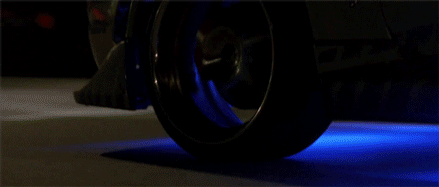With Christmas, Hanukkah, Kwanzaa, family gatherings, and office holiday parties rapidly approaching, more and more Americans are going to be heading to the mall to do some shopping. As much as we tell ourselves the holidays aren’t about the gifts, Americans spend a lot of time and money each year buying presents for others (and quite possibly themselves). In fact, Fortune reported that holiday sales exceeded $1 trillion in 2016. And when that many people are heading to the mall, it not only means long checkout lines, but long traffic lines as well.
While Black Friday, which took place on November 24, 21017 is often thought of as the pinnacle of holiday shopping days, according to ShoppingTrak, Saturday, December 23, 2017, is a close second. While December 23rd may seem like an arbitrary date, the last Saturday before Christmas is known in retail as Super Saturday, because shoppers are finishing up finishing up their gift purchases or have left all of their shopping until the last minute. According to Fortune, 155.7 million people went shopping on Super Saturday in 2016. By the time Super Saturday rolls around, it is likely too late to be placing any online orders, so shoppers must go to the store. Rounding out the top five shopping days of the year are December 16, 2017, (the second to last Saturday before Christmas) December 26, 2017 (presumably when people are making returns and exchanges), and November 25, 2017 (the day after Black Friday).
With millions of people going shopping on Super Saturday, and really throughout all of December, traffic near malls and shopping centers is going to be worse than usual. Whether you’re a shopper trying to get in on the action, or someone who finds themselves in the unfortunate position of living or working near a big shopping area, the traffic will be hard to miss. Parking lots will be chaotic, highway exits will be backed up, and more pedestrians than usual will be on the streets. And no matter how much you love the holidays, sitting in traffic can be frustrating, to say the least. So, to keep tempers down, driving school Aceable has some tips on to how drivers can avoid road rage when stuck in shopping traffic, and what to do should you find yourself in a motor vehicle accident with an aggressive driver.
Tips for Avoiding Road Rage
Most road ragers are usually dealing with some sort of emotional crisis, so if your girlfriend or boyfriend just broke up with you (or got unpleasant news from your doctor, or just woke up on the wrong side of the bed), be extra careful when you get behind the wheel. Give yourself some time to defuse before getting behind the wheel.
Expect other drivers to make mistakes and remember that everyone is human. You’ll be less freaked out when they do.
Be predictable. Always check your blind spots and use your signals when you change lanes so you don’t turn anyone else into a road rager. Checking all the views around your vehicle and being a considerate driver should help with preventing road rage.
If it’s rush hour or you find yourself in a traffic jam due to an accident, listen to music and just come to terms with the fact that you’re going to run late. It’s okay. No need to be inconsiderate to drivers around you by making obscene gestures at people trying to merge into your lane.
What To Do If You Enconter Road Rage
Avoid mad motorists, if at all possible. Ain’t nobody got time for that negative energy.
Don’t feed the trolls. If you try to speed up to pass an angry driver or prevent them from merging in your lane, it only makes things worse and can put your life in danger! Let them pass and leave plenty of room between you and that grump.
If an angry driver gives you the finger or makes another obscene gesture, be a grown up and ignore it. Such gestures have gotten people physically attacked many times. Um, no thanks.
Honk that horn only if you really have to for defensive driving purposes… like if a driver is merging into your lane and doesn’t appear to see you. Don’t use your horn if you’re simply annoyed because you’re sitting in traffic. We’re all in the same boat … er, car. Honking your horn is meant to be used to alert other drivers, not to scold them. Take the high road, engage in polite driving.
Don’t be afraid to report aggressive drivers to the authorities. You could save a life and prevent road rage from causing a bigger issue.
If you see a driver with road rage get into an auto accident, be cautious about approaching the vehicle and driver. Stop a safe distance away from them, then call the police to report the incident. Aggressive drivers can be unpredictable and it’s important to keep yourself safe
If an aggressive driver starts following you, don’t go home. Call the police and drive to the nearest police station. You don’t want to become the victim of a road rage attack.
While the holidays are supposed to be a joyous time, sitting in traffic, especially when you're trying to get last minute shopping done, can be anything but. No one likes sitting in traffic when they could be doing literally anything else, but no one likes getting in automobile accidents either. When shopping on Super Saturday, or doing any other holiday shopping this season, know that the mall is going to be busy, and things will likely be moving more slowly than usual. Remain calm, put on some holiday music, and remember that the holidays don’t last forever. Soon your Saturdays will consist of more than just sitting in mall traffic, and you won't be spending your time dealing with accident attorneys, insurance companies, and body shops, since you avoided getting into an aggressive driving car crash.
Sitting in traffic can be frustrating, but it's important to not let that frustration get the best of you, and result in unsafe aggressive driving behaviors, which can lead to road rage car accidents. If you become the victim of an aggressive driving car accident, talk to an experienced accident lawyer at The Michigan Law Firm, PLLC. Call us at 844.4MI.FIRM for a free legal consultation.













